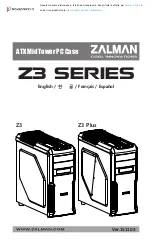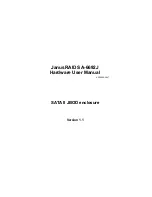
25
9 Hard Disk Player Terminology
The following pages carry a glossary of hard disk
player and network terminology that will help you get
the best from this manual and ease the installation
and operational learning-curve.
AAC:
AAC (Advanced Audio Coding) is a lossy compression
and encoding format for digital audio. Intended to be
a successor of the MP3 format, AAC was designed to
achieve better sound quality than MP3 at equivalent
levels of data compression. AAC’s best known use is as the
default audio format of Apple’s iPhone, iPod, and iTunes
application, and as the format of all iTunes Store audio.
AAC is however also employed by Sony and Nintendo.
AAC files are sometimes identified by .m4a or .mp4 file
extensions.
AMG:
The
All Music Guide
database is the primary database that
the HDX-SSD interrogates when a new CD is inserted in its
drawer. The AMG database can be interrogated manually
at www.allmusic.com
Note:
The data provided by AMG is occasionally
inaccurate or incomplete. It is possible however to submit
corrections at www.allmusic.com
Broadband Internet:
Broadband internet is the generic term for an “always-on”
internet
connection that provides data download rates
above 256kb/sec.
Apple Lossless:
Apple Lossless is a loss less compression and encoding
format for digital audio. It offers between 40% and 60%
data compression without loss of audio information.
Bit Perfect:
The term bit perfect refers to the error free ripping of digital
data stored on CD. A bit perfect rip file will be, bit for bit,
identical to the data held on the CD.
Browser:
A browser is a PC application that accesses, displays and
implements
web pages
. Microsoft Internet Explorer and
Mac OS X Safari are examples. As well as distributing music
data on a
network
, the HDX-SSD generates
web pages
that can be read by a browser.
Client:
A client is a software application on a PC that accesses a
remote service on another computer system, known as a
server, by way of a network - the HDX-SSD Desktop Client
application for example.
DHCP (Dynamic Host Configuration Protocol):
Hardware items installed on a
TCP/IP
network have an
IP
Address
through which they are identified by all the other
items on the network. DHCP is a set of rules that enable the
automatic allocation of addresses as items are connected
(or switched on while connected) to the network. The HDX-
SSD is set up by default to use DHCP.
Digital Rights Management (DRM):
Digital Rights Management refers to the data embedded
in some music files that restricts copying and playback.
Material downloaded from the Apple iTunes store is an
example.
Firewall:
A firewall is a network device or software application
designed to control computer network traffic by
compliance with a specific set of rules and security criteria.
Firmware:
Firmware describes control and interface computer
programs that are embedded in the electronic hardware
of a product.
FLAC:
FLAC (Free Lossless Audio Codec) is a file format for audio
data compression. Being a lossless format, it removes no
information from the audio data, as lossy compression
formats such as MP3. FLAC’s primary advantage is a
reduction of data storage requirements by up to 50%, it
may however result in subjectively less good sound.
Flash:
Adobe Flash is a software application that provides
interactivity and animation in web sites. It is usually
embedded into web browser applications.
FreeDB:
FreeDB is the secondary database that the HDX-SSD
interrogates when an unknown CD is inserted in its drawer.
Internet:
The internet is the worldwide network of predominantly
TCP/IP connected servers and computers. While the
internet provides a variety of data services for professional
and corporate use, most people know it for email and the
World Wide Web.
IP Address:
An IP address is a numerical identifier unique to a specific
piece of hardware on a TCP/IP network. IP addresses
contain four groups of numbers from 0 to 255 separated by
dots. 192.168.0.8 is a typical IP address.
Local:
Local in terms of this manual means non-network
connections and associations. For example, a hi-fi system
(amplifier and speakers) connected to the HDX-SSD’s
audio outputs, or a touch screen connected to the HDX-
SSD’s
USB
interface is local. A hi-fi system or a touch screen
connected via the
NaimNet
network is not local.
Memory Stick:
A memory stick is a small, portable solid-state computer
memory element that connects via USB to provide
removable extra storage. Memory sticks have replaced
floppy disks.
Supplement – Hard Disk Player Ter minology




































